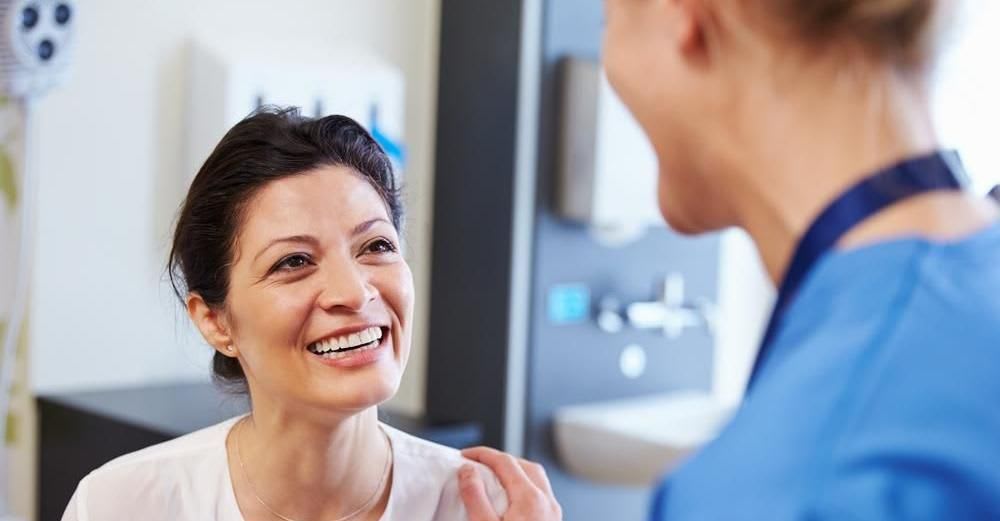5 Countries for Midwifery Students
Midwives play are an essential part of any healthcare system. Primarily, they assist women during pregnancy, but the scope of their responsibilities can vary quite dramatically from country to country. For example, in some countries midwives oversee the entire pregnancy cycle, including the delivery. In others, they provide more of a supporting role to other healthcare professionals, focusing more on preparing women for birth and providing post-natal care. So if you are thinking about embarking on a career in midwifery, it is crucial to understand how your location will define your professional duties. Here are five counties where you can study and practice midwifery.
- Education
- Study Abroad
- International News

Midwives play are an essential part of any healthcare system. Primarily, they assist women during pregnancy, but the scope of their responsibilities can vary quite dramatically from country to country. For example, in some countries midwives oversee the entire pregnancy cycle, including the delivery. In others, they provide more of a supporting role to other healthcare professionals, focusing more on preparing women for birth and providing post-natal care.
So if you are thinking about embarking on a career in midwifery, it is crucial to understand how your location will define your professional duties.
Here are five counties where you can study and practice midwifery.
Germany
Midwives are a highly valuable part of the German healthcare system. In fact, it is mandatory for a midwife to be present at birth, even if an ob-gyn doctor is delivering the baby. Subsequently, midwives are in high demand and there are plenty of opportunities once you've completed a three-year bachelor’s degree.
Midwives run maternity units within smaller hospitals (between 300-700 births per year). Moreover, even some of the larger hospitals offer specialized services where midwives oversee the delivery.
Midwives in Germany tend to have much more responsibility than those working in other countries and they work with women before, during, and after the birth. This includes running prenatal classes, discussing birth-options, and being on hand to ease the concerns of first-time mums-to-be. Post-natal services include home visits, advice on breastfeeding, and monitoring any c-section wounds.
While many midwives in Germany work for a hospital or clinic, a large number operate as contracted or freelance midwives. Working freelance allows many midwives to balance their work life with other important responsibilities, such as raising a family of their own. Others are drawn to the freedom and autonomy of being your own boss. Freelancers work on short contracts and have more choice over when they work, meaning they're not tied to specific rotas which can often include grueling nightshifts.
Germany has over 50 midwifery schools and the training consists of around 1,600 hours of theory work and 3,000 hours of practical experience and assessments.
United Kingdom
There are over 27,000 qualified midwives in the UK, and the Government is making concerted effort to encourage more people into the profession. In 2018, the UK government announced a 25 percent boost in training places and is aiming to fill 3,000 positions on midwifery courses over the next four years.
In the UK, the Nursing and Midwifery Council (NMC) oversees all midwifery education and training programmes and all midwives that work in the UK must be registered with the NMC. Courses must take place within the Council’s Approved Educational Institutions (AEIs) and usually last for three years. Again, training is split between classroom learning and practical clinical experience. Students are taught how to promote and facilitate childbirth and identify any possible complications. They also learn how to provide the right information and communicate effectively with patients and their families.
Once qualified, the majority of midwives work within the NHS as part of small teams that oversee the birth and post-natal care. Others move into the private healthcare sector and a small number are employed by social enterprise schemes, which are part of the Government's aim to shift more control to local authorities. Social enterprise schemes include promoting public health within the community or overseeing specialized initiatives, such as teenage pregnancy clinics.
United States
While US midwives are involved in only about ten percent of births, the profession is growing. According to Dr. Timothy J. Fisher, an ob-gyn residency program director, more and more US families are opting for midwives for their maternity care. He writes, "The midwifery model of care emphasizes normalcy and wellness. It empowers women and gives them greater ownership of their health, their pregnancy, and the outcomes of that pregnancy based on choices that they’re able to make,”
The trend is most prevalent among millennials and those who have used midwifery services tend to report a higher level of satisfaction. There is also some empirical data that supports the shift in attitudes. A 2018 study found that people who have midwives are less likely to have cesarean deliveries or episiotomies. They are also much more likely to breastfeed, which has been proved to have significant health benefits for both mother and child.
US midwives perform physical exams, prescribe medications and contraceptive, order laboratory tests, and provide prenatal and postnatal care. They also play a crucial role in public health education and even offer some counseling service. This figure is significantly less than in most other industrialized countries, where midwives are used in over 50 percent of deliveries. US midwives who want to play an active role in the birthing process should look for work in the Northeast, Pacific Northwest, and Southwest states, as these have the highest numbers of midwives practicing for every 1,000 births; states in the Deep South have the fewest.
Midwives who want to practice in the USA need a bachelor’s degree accredited by the Accreditation Council for Midwifery Education (ACME). They must then pass a national certification exam from the American Midwifery Certification Board (AMCB).
New Zealand
New Zealand has four accredited midwifery programmes. Courses last between three and four years and students must complete 4,800 hours of study, which includes a minimum of 2,400 hours of clinical experience. All the schools offer remote learning for students in provincial areas, although they may be required to travel for practical experience and assessments.
The programmes focus on basic skills like antenatal care, labor care, infant resuscitation, and newborn examination. During their studies, students work in a variety of settings including family planning clinics, community maternity hospitals, and neonatal intensive care units.
Once qualified, graduates must meet the Midwifery Council of New Zealand's fit and proper standards for registration as a midwife and pass the national examination.
The majority of pregnant women in the country choose a midwife as their lead maternity carer. This means that while midwives have plenty of career opportunities, but, largely due to the country’s relatively low population of 4.8 million, the role tends to be less demanding when compared to other countries. Almost half of all midwives in New Zealand are self-employed.
Canada
Canada is an excellent place to study and practice midwifery. The country is often near the top of any standard of living chart, and its public healthcare system is one of the best in the world. The Canadian Midwifery Regulators Council regulates the profession, ensuring the highest standards of care across all the territories. The organization sets the national standard and administers the national Canadian Midwifery Registration Examination, as well as approving all educational programs. There are seven midwifery education programs available across the country, all of which last for four years. Each program is direct entry, meaning there are no nursing or other credential requirements for applicants.
Midwives in Canada play an active role throughout the pregnancy cycle. They're considered as autonomous, primary health care providers and work in pairs or small teams that provided a 24/7 and 365 day a year service for pregnant women. The regulatory council puts a strong emphasis on providing the education to allow women to make an informed choice in regards to a variety of birthing options.
Canadian midwives are also playing an important role in allowing first nations people to revive and preserve many of their birthing traditions. For decades, first nation women were forced to leave their communities and give birth in hospitals. Now, thanks to places like Six Nations Maternal and Child Care Centre, many are choosing holistic and traditional methods which reflect their heritage. For example, each indigenous group has its unique birthing rituals which are believed to affect the baby's spiritual developments. Hospitals are often unable to accommodate these practices, but the birthing centers are providing a crucial link between the past and the present. Evelyn George works for the National Aboriginal Council of Midwives. She writes, “Reclaiming these practices that are ours is really profound. It’s a much deeper, more profound revitalization and reclamation. It’s becoming self-determined again.”
MIdwifery is a challenging, unique, and extremely rewarding role. Despite the pressures of the job, many midwives describe their work as a privilege. And, according to the UN, there has never been a more critical time for students to take up midwifery. A recent report highlighted a global shortage of trained midwives and filling these gaps could save millions of lives. The increased demand has led to universities creating more spaces for trainee midwives, as well as significantly more funding opportunities to support you through your studies.

Ashley Murphy
Author
After graduating with a degree in English literature and creative writing, Ashley worked as a bartender, insurance broker, and teacher. He became a full-time freelance writer in 2016. He lives and writes in Manchester, England.
Find a program in these categories
Read related articles

What You Should Know If You Want To Practice Medicine Abroad

Five Countries to Choose for Nursing Degrees
